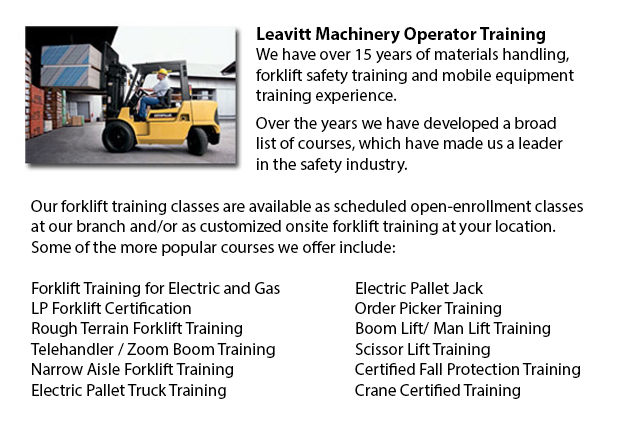
Aerial Lift Training Alberta - Aerial forklifts can be utilized to accomplish many unique duties executed in hard to reach aerial places. Many of the duties associated with this style of lift include performing daily upkeep on structures with high ceilings, repairing telephone and utility cables, raising heavy shelving units, and trimming tree branches. A ladder could also be used for some of the aforementioned tasks, although aerial hoists offer more security and strength when properly used.
There are several designs of aerial lifts accessible on the market depending on what the task required involves. Painters sometimes use scissor aerial hoists for instance, which are classified as mobile scaffolding, effective in painting trim and reaching the 2nd story and above on buildings. The scissor aerial lifts use criss-cross braces to stretch and enlarge upwards. There is a table attached to the top of the braces that rises simultaneously as the criss-cross braces lift.
Container trucks and cherry pickers are a different variety of aerial lift. They possess a bucket platform on top of an elongated arm. As this arm unfolds, the attached platform rises. Platform lifts use a pronged arm that rises upwards as the lever is moved. Boom hoists have a hydraulic arm that extends outward and hoists the platform. Every one of these aerial hoists require special training to operate.
Training courses presented through Occupational Safety & Health Association, acknowledged also as OSHA, cover safety techniques, machine operation, maintenance and inspection and device weight capacities. Successful completion of these training courses earns a special certified license. Only properly licensed people who have OSHA operating licenses should run aerial platform lifts. The Occupational Safety & Health Organization has developed rules to maintain safety and prevent injury when utilizing aerial lift trucks. Common sense rules such as not using this piece of equipment to give rides and ensuring all tires on aerial lifts are braced so as to hinder machine tipping are observed within the guidelines.
Regrettably, figures illustrate that in excess of 20 operators pass away each year when operating aerial platform lifts and 8% of those are commercial painters. The majority of these accidents are due to inappropriate tire bracing and the lift falling over; for that reason a lot of of these deaths were preventable. Operators should ensure that all wheels are locked and braces as a critical security precaution to stop the machine from toppling over.
Other rules involve marking the encircling area of the machine in a visible way to protect passers-by and to ensure they do not come too close to the operating machine. It is imperative to ensure that there are also 10 feet of clearance among any electrical cables and the aerial lift. Operators of this machinery are also highly recommended to always have on the proper safety harness while up in the air.
-
JLG Telehandler
JLG Telehandler Training Alberta - Following retirement in the late 1960's, John L. Grove started out on a cross country RV trip. After spending many years establishing his family built crane business with his brother, John had no idea that this trip... More -
Scissor Lifts
Scissor Lift Training Alberta - The scissor lift or table lift, is a mechanical industrial lift that may be adapted to be used in retail, wholesale, manufacturing and production environments. Industrialized scissor lifts have been used mostly within... More -
Pneumatic Forklifts
Pneumatic Forklifts Training Alberta - Pneumatic lift trucks are known as pallet lift trucks or pump trucks and are extensively utilized in warehouses and shipping plants to transfer resources on pallets. Pneumatic jacks consist of a pair of steel bl... More -
Toyota Forklift
Toyota Forklift Training Alberta - Ever since 1992, Toyota Material Handling inc., U.S.A., also known as TMHU, have been the best selling lift truck provider in the United States. This business has been situated out of Irvine, California for well ove... More -
Boom Trucks
Boom Trucks Training Alberta - Boom vehicle are often utilized by phone, cable television and utilities companies as they have extended folded arms which are commonly folded over the roofs of business vehicles. On the end of the extension of extendab... More

Forklift Training Alberta
TOLL FREE: 1-888-254-6157
forkliftcertificationalberta.com/
Email Us
About Us


